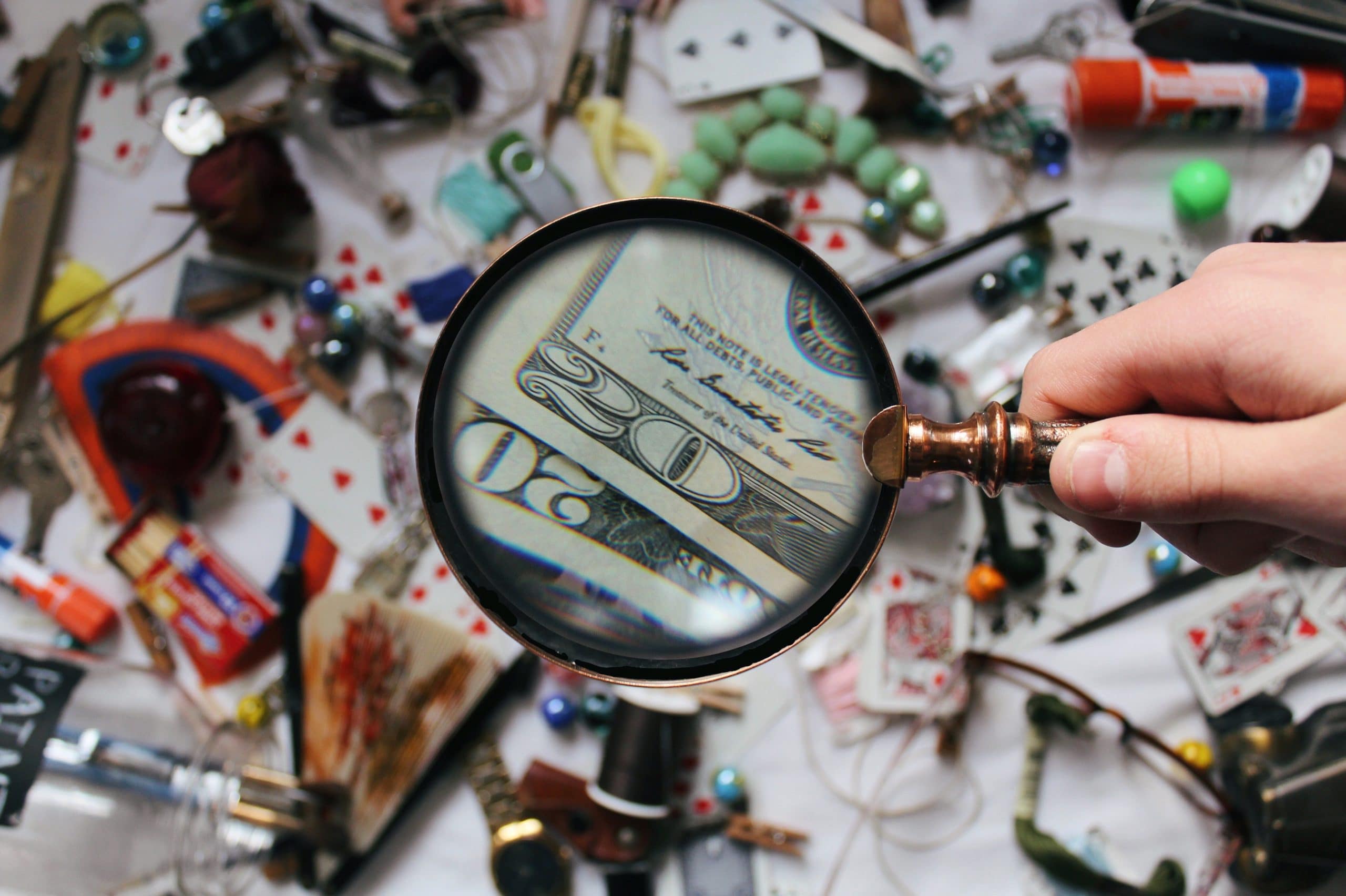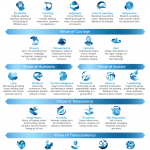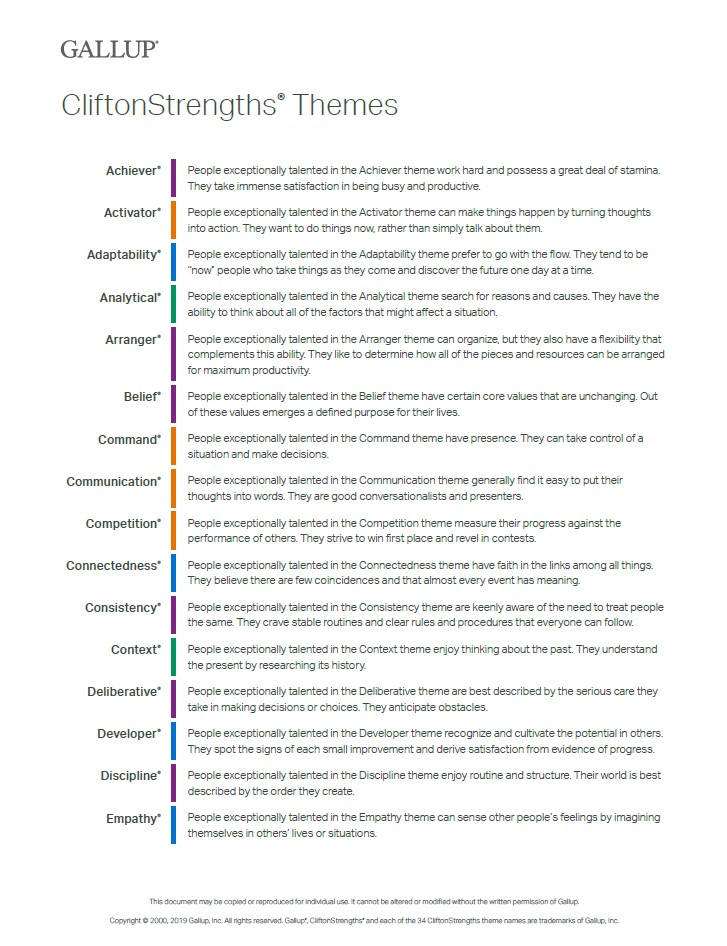If you’re like me, you have sat in countless training sessions or performance reviews being told to identify your weaknesses and develop strategies to compensate for or overcome them. Did anyone ever tell you to focus on your strengths? It seems to be a totally foreign concept in most workplaces. But focusing on strengths will lift not only performance, but also engagement and motivation – and it feels a whole lot better than moping over things we aren’t good at!
The magic of focus
Have you ever bought a new car and suddenly, as if by magic, you see that make and model of car everywhere? Yesterday, you’d never even seen another one of those cars on the road, and now suddenly, three of your neighbours have them in their driveway!
It's an illusion
This is referred to as the Baader-Meinhof Phenomenon or the Frequency Bias/Illusion. It’s not because dozens of that particular vehicle make and model moved into your neighbourhood overnight.
It’s because you’ve recently paid attention to that make and model. Our brains are wired so that what we focus on and pay attention to, we see more of in our life.
Use your illusion
(With thanks to Guns n Roses for the inspiration for this title!) I’d like to suggest that you apply the Frequency Illusion to how you relate to your strengths and weaknesses.
Where's your focus: strength or weakness?
If you focus only on your weaknesses, you’ll always have plenty of “problems” that need solving. It can be really demotivating to only see what’s wrong and needs fixing. So instead of focusing on your weaknesses, why not focus on your strengths?
Strengths identification
Research shows that when we deliberately focus on living in our strengths, we develop our resilience, increase our ability to manage stress, and feel more fulfilled in our lives. Who doesn’t want a bit of that?
But sometimes we’ve spent so long looking at our weaknesses that we struggle to identify what we’re really good at. Here’s a couple of ideas that might help:

What you focus on, you see more of.
- Ask your friends and family, and your work colleagues about when they’ve seen you at your best. Their stories will give you clues to what you’re good at and what makes a positive difference for others.
- Get your hands on The Strengths Deck. I developed The Strengths Deck to put the power of strengths in your hands! It’s a set of cards you can use yourself, or in a coaching session with me, to identify your strengths, weaknesses and everything in-between. Contact me or book a call to find out more.
- Complete a Strengths Profile assessment – I’m an accredited Strengths Profile practitioner, so can guide you through the whole process. This includes an action-oriented coaching session to uncover your hidden strengths, and help you create a plan to use your strengths in new ways. Contact me to get your Strengths Profile journey underway.
- Use an online assessment. The VIA Survey and High5 Tests are great, free online tools that allow you to save your results and track your changes over time.
- Do some journaling – write about times that you were successful, felt engaged in your activities (at work or home ), and really enjoyed yourself. Look for common themes across the experiences.
The secret of change is to focus all your energy, not on fighting the old, but on building the new.
Socrates Tweet
Strengthen your strengths
After identifying your key strengths, think about how you can strengthen them. You can do this by:
- Applying them to a new area of work or play
- Using them in new ways to support weaknesses or activities that you find draining
- Working with a mentor or coach who will challenge you to keep finding new ways to apply your strengths
- Developing cue, routine, reward cycles that feed the neurological loops in our brains that create our habits (see this NPR article for a great explanation of how to do this, and how it works)
And what about those pesky weaknesses?
I’m not saying to let the weaknesses slide. There is a time and a place to understand them, and how they affect your relationships and work performance. But they shouldn’t be your sole or major focus.
Why? Because most weaknesses aren’t career- or relationship-ending. But if you are struggling with a weakness that could seriously affect your career or relationships, I’d recommend you engage with a good coach as soon as possible!
Go neutral, not nuclear
For the more garden-variety weaknesses that aren’t career-ending, but hold you back from your best, you could try the nuclear option of completely demolishing and rebuilding your personality and habits from the ground up. But that’s a whole lot of effort, and science tells us that you’ll probably switch back within a few weeks when it all gets too hard.
The other option is the “go neutral” approach. We usually characterise behaviours as “good” or “bad”, but many behaviours are fairly neutral. So rather than trying to swap out your “bad” behaviour with “good” behaviour, why not try going neutral? For example, if you usually take a negative position with every idea presented in a meeting (the “bad” behaviour), instead of trying to speak positively about every idea (the “good” behaviour), try saying nothing at all (the neutral option).
The beauty of this approach is that you don’t have to come up with new and ingenious ways to counter the “bad” behaviour, you just need enough self-awareness to recognise when to switch to neutral.
Have a read of my post How to flex your strengths and deal with weaknesses to learn some other effective strategies for maximising your strengths, and responding effectively to weaknesses that have a negative impact on your career or relationships.
What are you waiting for?
Start identifying your strengths today – you can get underway in less than five minutes. Once you’ve got a few written down (have a look at the lists below if you need inspiration), decide which strength you’re going to work on this month. Then brainstorm a list of ways in which you can practice this strength.
Check out my post about to-do lists for why you want to pick only a small set of things to work on at any one time.
Then go out there and get stronger every day!
Strengths definitions
I work with a number of different strengths models, including The Strengths Deck, which I have created based on the latest strengths research. Below are definitions from VIA Institute on Character; Strengths Profile; and Gallup CliftonStrengths.
I would also love to introduce you to The Strengths Deck, which I believe is the most fun, engaging, and effective way to discover and learn about your strengths and develop strategies to use your strengths wisely and well.
I am also an accredited Strengths Profile Practitioner; I recommend the Strengths Profile tool for strengths work with teams and organisations, or if you prefer an online assessment and computer-generated report.
Discover your strengths
I created The Strengths Deck to put the power of strengths in your hands. If you want to learn about your unique strengths fingerprint and how to make the most of your amazing strengths, click the logo to find out more, or make a booking for your free, 30-minute call to talk about how we can get your strengths working for you.










3 thoughts on “Focus on your strengths, not your weaknesses”
Like!! I blog quite often and I genuinely thank you for your information. The article has truly peaked my interest.
Pingback: What to do with weaknesses? ~ Daria Williamson
Pingback: How can you use your strengths to pursue your dreams? ~ Daria Williamson
Comments are closed.